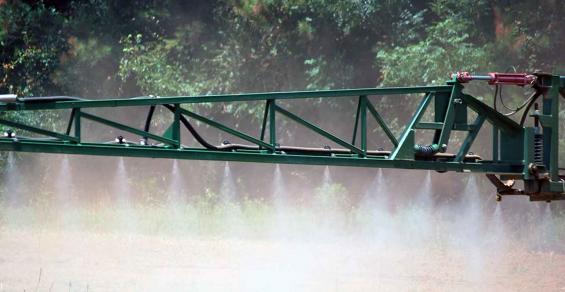When tank-mixing herbicides, there are three types of interactions that can occur. Antagonistic interactions are not desirable.
Before you spray and pray, make sure you are aware of the potential for herbicide antagonism to occur.
One of the most common practices on the farm is to tank-mix different types of herbicides to save time and money (i.e. controlling grasses and broadleaf weeds at the same time). Current farm diesel prices, which are hovering around $4.76 to $5.50 per gallon, make this practice even more attractive. It might not always be the best idea, though.
Related: Are you doing these 8 things to keep boom sprayer on target?
When tank-mixing herbicides, there are three types of interactions that can occur. These interactions can be either synergistic (greater than), antagonistic (less than), or additive (equal) to the summed effect of the herbicides applied alone. In the wacky world of weed science, antagonistic interactions are not desirable.
A classic example of an antagonistic interaction that occurs in peanut country is when graminicides [grass herbicides such as Select (clethodim) or Poast (sethoxydim) or Fusilade (fluazifop-P)] are tank-mixed with broadleaf herbicides such as Basagran (bentazon), Cadre (imazapic) or 2,4-DB.
In figures 1 and 2, it is evident that when a grass herbicide was tank-mixed with either Basagran + 2,4-DB, Cadre, or 2,4-DB, the control of Texas panicum (bullgrass/buffalograss) was significantly reduced by 7%-16%.
Other studies have shown grass control reductions somewhere between 12%-45%, depending upon the species. A 5%-10% reduction in grass weed control is not likely to directly reduce peanut yields. But anybody who has ever dug peanuts knows that grassy weeds are some of the worst problems to have at harvest time. They can be a digging nightmare!
The causes of herbicide antagonism have not been completely elucidated but several possible reasons exist. These include environmental conditions at the time of application, grass susceptibility, and differences in plant genetic/morphology/physiological characteristics.
An analysis of more than 479 herbicide interactions concluded that antagonism was more likely to occur when the target plants were monocots (grasses/sedges) when compared to dicots (broadleaves) and for plants in the Asteraceae (sunflower/daisy), Poacea (grass), or Fabaceae (pea/bean) plant families.
There are two practical methods to help overcome the antagonistic interaction that occurs between graminicides and broadleaf herbicides. These include increasing the use rate of the grass herbicide (within label) or applying the grass herbicide 1-3 days before applying the broadleaf herbicide. I would prefer the latter.
A side note and a topic for another article, antagonism can also occur when certain fungicides are tank-mixed with herbicides. This does not happen all the time and with every fungicide/herbicide combo but definitely worthy of mention here and getting on everyone’s radar.
The goal of every herbicide application should be to get the best weed control possible (without unnecessary spending). Tank-mixing herbicides can be a great way to save time and money. It is always a great idea to check the herbicide label and/or with your local county extension agent, extension weed specialist, pesticide purveyor before you pull the trigger on any tank-mix.
As always, good weed hunting!





